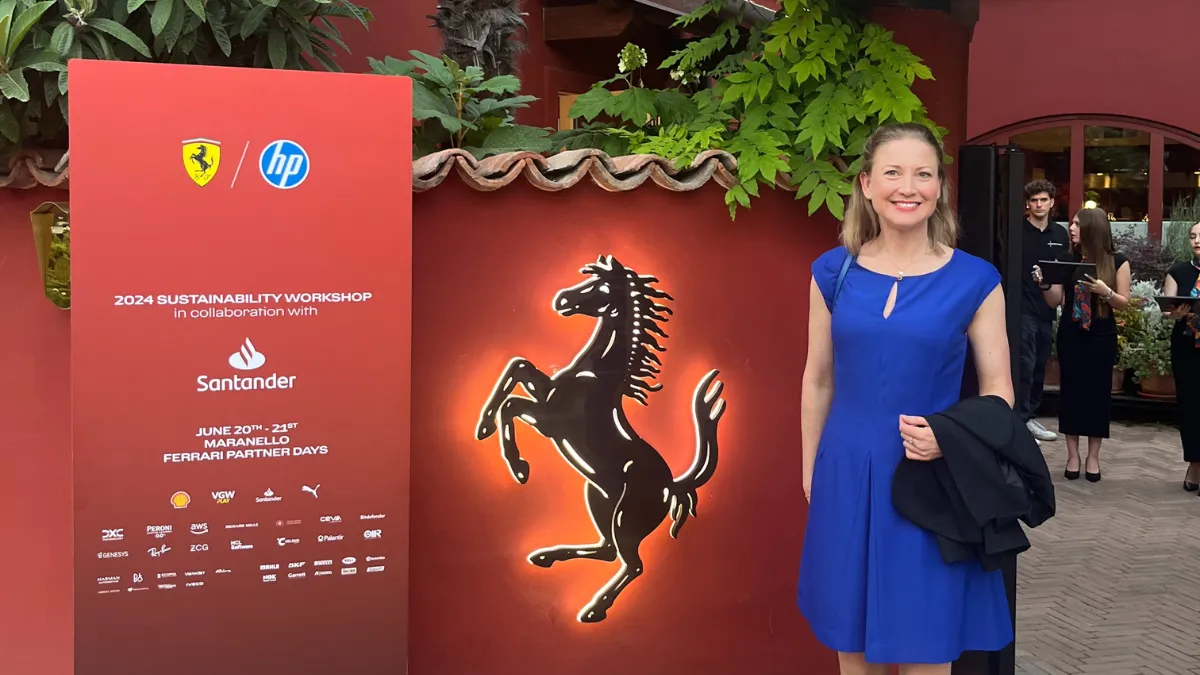3 insights from Ferrari’s Sustainability Workshop
By Melanie Windridge
Ferrari held their second Sustainability Workshop, in collaboration with Santander, on 20th June, the day before the grand opening of their new E-building. During the workshop, participants got a high-level view of the energy transition from Santander’s Global Head of ESG & Sustainable Tech, Lucas Aranguena, then an overview of fusion energy and the fusion landscape from me.

We participants also had a tour of the new E-building, seeing Ferraris being assembled in a bright, shiny, state-of-the art facility. The ‘E’ stands for Energy, Environment and Evolution. Ferrari has plans to begin making fully electric Ferraris in the future alongside their ICE and hybrid vehicles.
What’s fusion got to do with Ferraris? you may be thinking. Here are 3 insights from the event that are relevant to fusion.
1.The fastest car Ferrari makes has the lowest emissions
The fastest Ferrari is a hybrid. The electric motor can give it a turbo boost.
Getting to the highest speeds requires technology that—at the lower, more regular speeds—improves performance efficiency too. This is a good metaphor for the societal impact of scientific research. Pushing the boundaries has benefits further down the scale too. The same will apply for fusion.
2.Innovation is about the culture (and exercising your thinking)
A guiding principle of Ferrari is to combine tradition with innovation. So how do they ensure they are always innovating? CEO Benedetto Vigna says that workers have to be comfortable taking risks, knowing it’s ok to explore something and fail.
It’s also important to get out of your comfort zone—to keep stretching the ‘muscle’ of doing things that make you a little uncomfortable. And question everything, buck the trends, weave your own path.
Vigna said that the brain is like a ski piste. In the morning, when the snow is groomed, you will ski anywhere, making your own tracks; by the afternoon, when the snow has been pushed around a bit, everyone is skiing in the same tracks, taking the easy route. Keep your brain in the morning frame—see the whole piste and not just everyone else’s tracks.
3. The biggest challenge for many large companies trying to decarbonise are scope 3 emissions from their suppliers.
For Ferrari, many of their suppliers are small and they view sustainability as a cost rather than an opportunity. Ferrari is working with their smaller suppliers to help them improve.
But a big reason that suppliers pose a decarbonisation challenge is because many involve industrial processes that are hard to decarbonise, such as steel. It’s another reminder that targeting some of these industries will be an important opportunity for fusion, one where it’s difficult to find alternatives.
Ferrari’s new E-building will be completely powered by green energy. It has solar panels all over the roof alongside fuel cells. Vigna says this will enable them to continue making unique cars while fully respecting the environment.
But, ultimately, Ferrari’s overall sustainability depends on their supply chain, which in turn depends on cleaner means of power generation.
